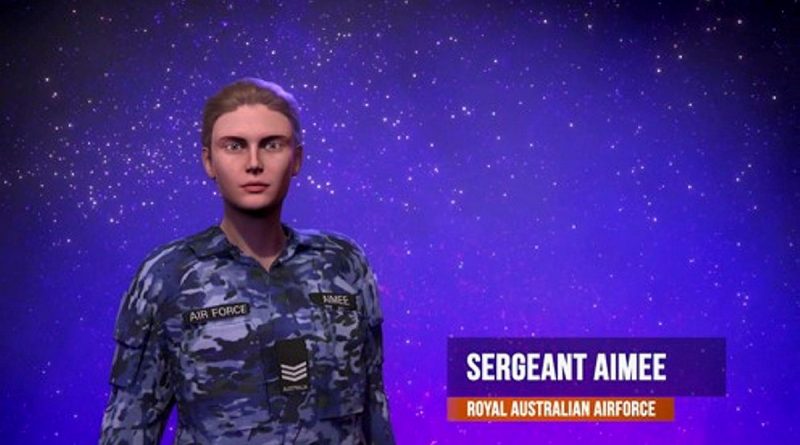Getting ready for artificial intelligence

Artificial intelligence (AI) is a force multiplier that has the potential to deliver faster, smarter and safer military effects with less resources. It is an essential technology that is at the heart of advances in decision support, situational awareness, logistics, robotic process automation, natural language processing and digital twin modelling.
CAPTION: Air Force’s Cognitive Assistant Avatar, AIMEE. Story by Alexander Manning.
Massive investments have already been made by both allies and competitors seeking to lead or gain advantage through application of AI. To highlight this, a recent report from the US National Security Commission on AI recommends that, “by 2025, the (US) Department of Defense and Intelligence Community must be AI-ready”.
What does an “AI-ready” organisation look like, and what does Air Force need to do to realise the benefits?
It is with this in mind that Jericho Disruptive Innovation held a series of AI Fluency sessions for Air Force Headquarters with Deloitte’s AI Institute. The sessions, also attended by Army, Navy and Capability Acquisition and Sustainment Group representatives, were the first step in a program to develop Air Force’s fluency in these rapidly growing technologies.
Rebecca Blackford, data scientist at Deloitte’s AI Institute, described AI as a collection of interrelated technologies used to solve problems and perform tasks that normally require human intelligence.
AI has never been more accessible, with rapid advancements in off-the-shelf AI. Machine-driven thinking is ready to integrate further into daily life, but the question is, is Air Force ready for AI?
Wing Commander Michael Gan, Jericho Disruptive Innovation AI Lead, explained that the uses of AI within Air Force were wide.
“The most exciting, however, are those that enable Air Force personnel to make smarter and quicker decisions, often in high-risk situations,” Wing Commander Gan said.
“A Decision Support System is one type of AI that aids personnel in making smart choices, arming them with simplified data and generated insights.
“A simple example of this could be a camera on the flight line that counts air mobility aircraft and classifies them. That data will be sent to a dashboard, which can ultimately assist you in your decision on aircraft arrivals and departures, as well as loading priorities, whether it be fruit or munitions.”
Air Commodore Grant Pinder, Director General Logistics, attended one of the sessions and reflected that AI could play a significant role in the future of logistics.
“AI has tremendous potential to enhance logistics in areas such as supply-chain management, intelligent automation, preventative maintenance and demand projection in the delivery of air and space power,” Air Commodore Pinder said.
Another key capability that AI offers Air Force is the ability to recreate real-life environments and scenarios in real time. This technology, named “digital twins”, allows users to figure out the best approach to high-risk scenarios such as a bushfire emergency, a car crash or rescue mission, creating a space where variables can be tested.
Dan Sutherland, solutions lead at Deloitte’s AI Solution Studio, put it simply.
“It’s trial and error without the error,” he said.
Digital twins will play a large role in Air Force’s adoption of AI – Air Force is already using digital twin technologies in new capabilities such as the Loyal Wingman and M2 satellite.
In launching the 2021 HACSTRAT, Air Vice-Marshal Cath Roberts said that this new digital-testing space could support and speed up decision-making processes apace with this dynamic environment.
“These projects have also allowed us to trial digital twin approaches to speed up capability development, by creating realistic synthetic environments to design, test, train and run mission simulations. Digital twins will become increasingly integral to rapid capability development,” she said.
To be able to harness the technology and be “AI-ready”, Air Force will need to develop its strategy, people, processes, data and technology to meet the challenges of the future. This will need to occur at the enterprise as well as unit and individual level.
.
.

.
.





